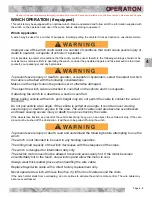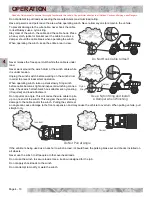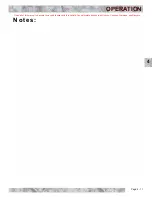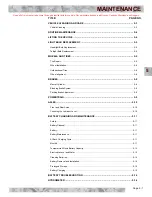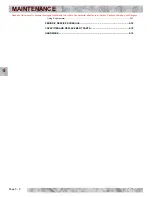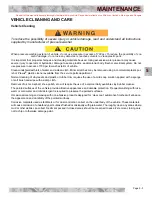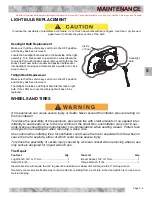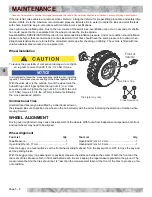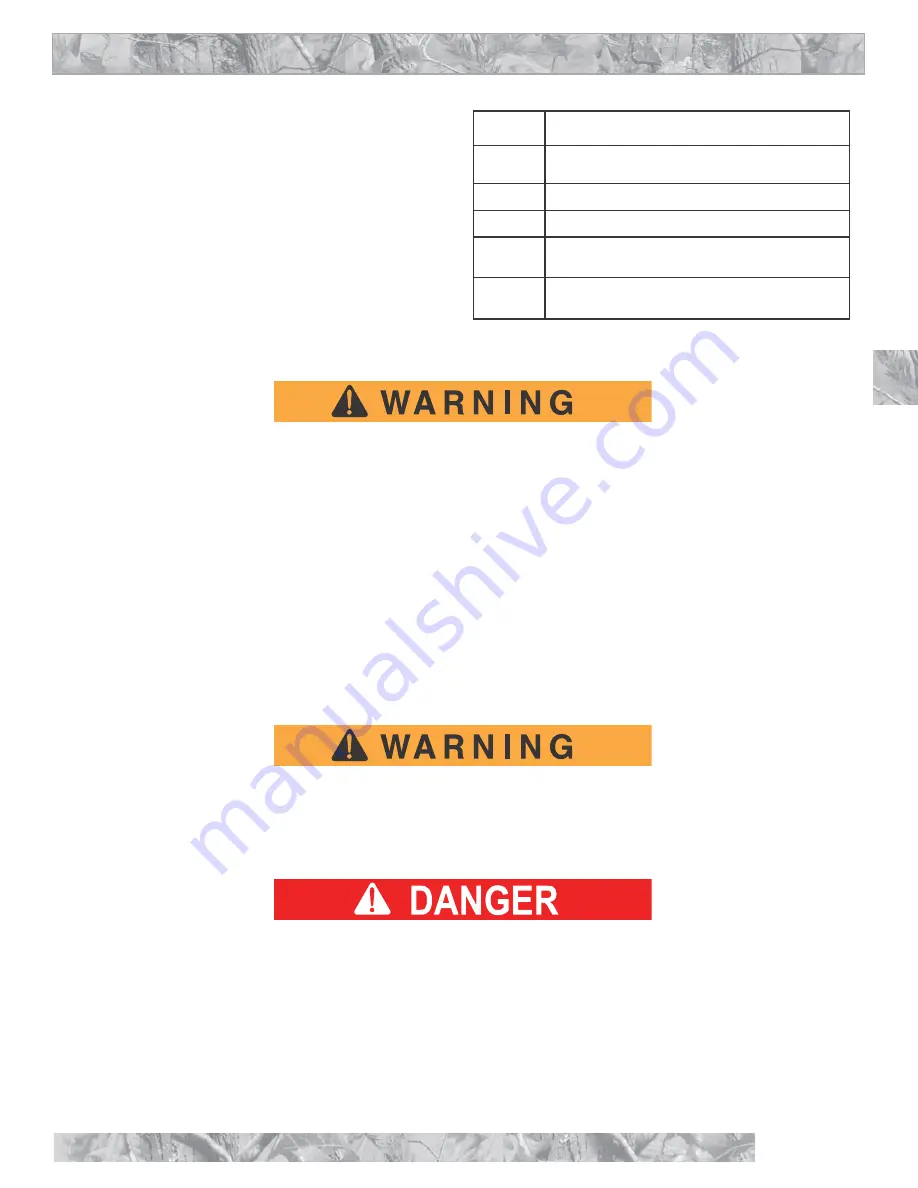
Page 4 - 3
OPERATION
Read all of this manual to become thoroughly familiar with this vehicle. Pay particular attention to all Notices, Cautions, Warnings, and Dangers.
4
Before a new vehicle is put into operation, the items
shown in the
INITIAL SERVICE CHART
must be per-
formed.
Remove the battery charger and read the operation
instructions for the charger before charging the battery
set.
Vehicle batteries must be fully charged before initial use.
Check for correct tire inflation. See GENERAL SPECIFI-
CATIONS.
Check the hydraulic brake fluid level.
Remove the protective clear plastic, that protect the seat
bottom and back rest during shipping, before placing the
vehicle in service.
Hydrogen gas is generated as a natural part of the lead acid battery charging process. A 4% con-
centration of hydrogen gas is explosive and could cause severe injury or death. Charging must
take place in an area that is adequately ventilated (minimum of 5 air exchanges per hour).
To reduce the chance of battery explosion that could result in severe injury or death, never smoke
around or charge batteries in an area that has open flame or electrical equipment that could cause
an electrical arc.
Hydrogen gas is generated in the charging cycle of batteries and is explosive in concentrations as low as 4%.
Because hydrogen gas is lighter than air, it will collect in the ceiling of buildings necessitating proper ventilation.
Five air exchanges per hour is considered the minimum requirement.
Never charge a vehicle in an area that is subject to flame or spark. Pay particular attention to natural gas or propane
water heaters and furnaces.
PORTABLE CHARGER
Use charger ONLY on 72 volt battery systems. Other usage may cause personal injury and dam-
age. Lead acid batteries may generate explosive hydrogen gas during normal operation. Keep
sparks, flames, and smoking materials away from batteries. Provide adequate ventilation during
charging. Never charge a frozen battery. Study all battery manufacturers’ specific precautions
such as recommended rates of charge and removing or not removing cell caps while charging.
Risk of electric shock. Connect charger power cord to an outlet that has been properly
installed and grounded in accordance with all local codes and ordinances. A grounded
outlet is required to reduce risk of electric shock – do not use ground adapters or modify
plug. Do not touch uninsulated portion of output connector or uninsulated battery termi-
nal. Disconnect the DC supply before making or breaking the connections to the battery
while charging. Do not open or disassemble charger. Do not operate charger if the AC sup-
ply cord is damaged or if the charger has received a sharp blow, been dropped, or other-
wise damaged in any way – refer all repair work to qualified personnel. Not for use by
children.
ITEM
SERVICE OPERATION
Batteries Charge batteries.
Seats
Remove protective plastic covering.
Brakes
Check operation, adjust if necessary.
Check hydraulic brake fluid level.
Battery
Charger
Remove from vehicle and read operating
instructions.
Tires
Check air pressure, adjust if necessary.
See vehicle specifications for tire pressure.
Initial Service Chart





















